Botany- 2b: Roots and Mangroves
1/33
There's no tags or description
Looks like no tags are added yet.
Name | Mastery | Learn | Test | Matching | Spaced |
|---|
No study sessions yet.
34 Terms
roots functions
- absorption and conduction
- anchorage
- storage
- secretion
tap roots
has one central primary root (thick, deep root) usually with few lateral roots
- ex: carrots
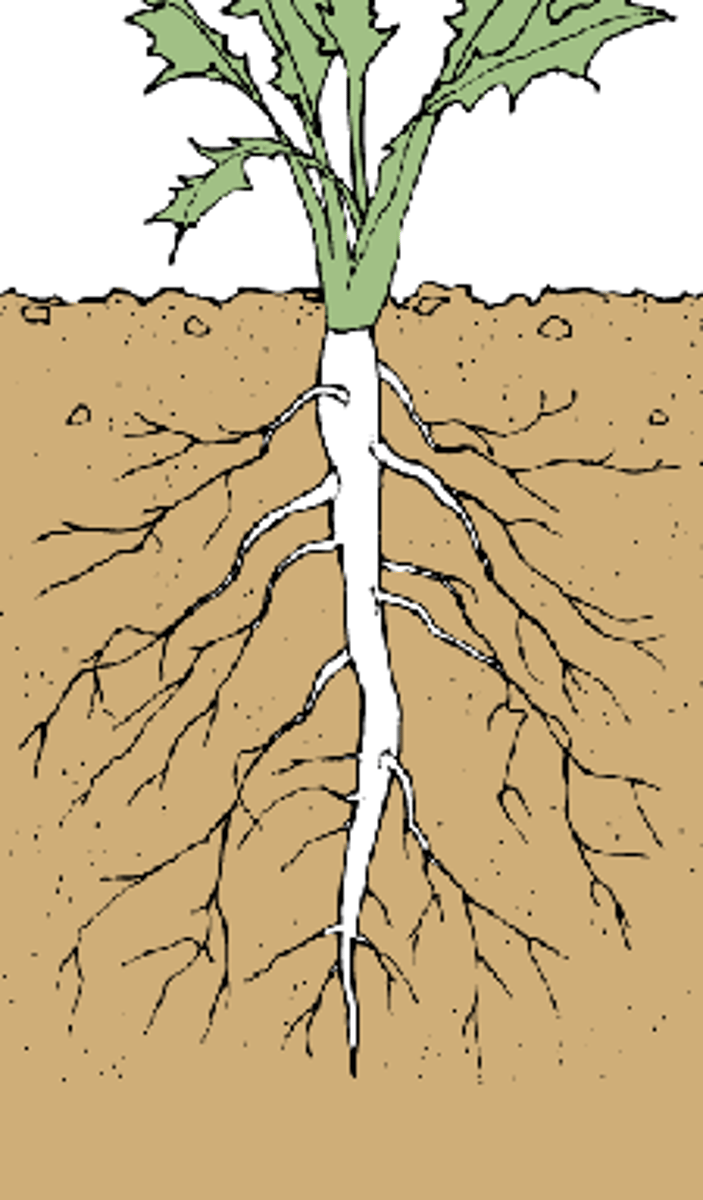
fibrous roots
part of a root system in which roots branch to such an extent that no single root grows larger than the rest
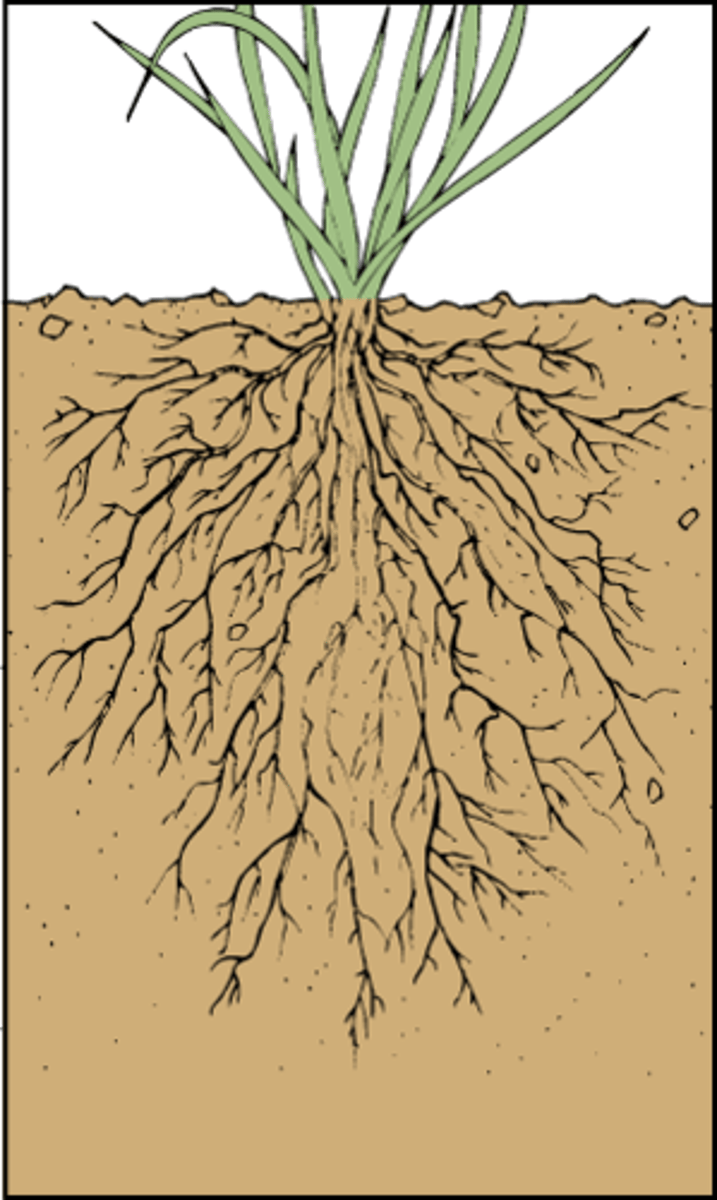
feeder roots
upper portion of root system (roots at or near the soil surface) that do the majority of absorption of minerals
external anatomy of roots
- spread greater than the shoot
- larger surface area than shoot
- balance of root and shoot
- lack nodes
dicot roots
tap roots
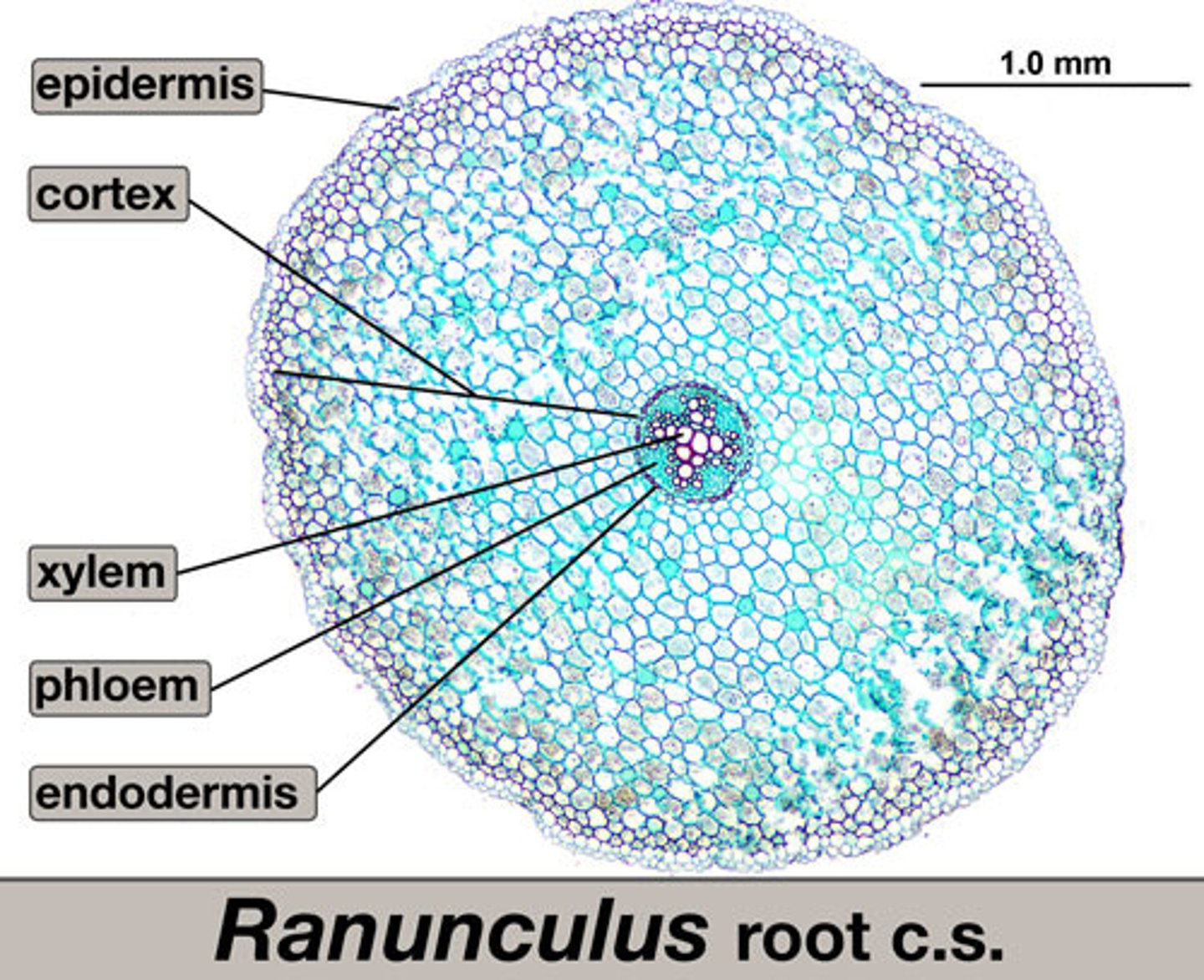
monocot roots
fibrous roots
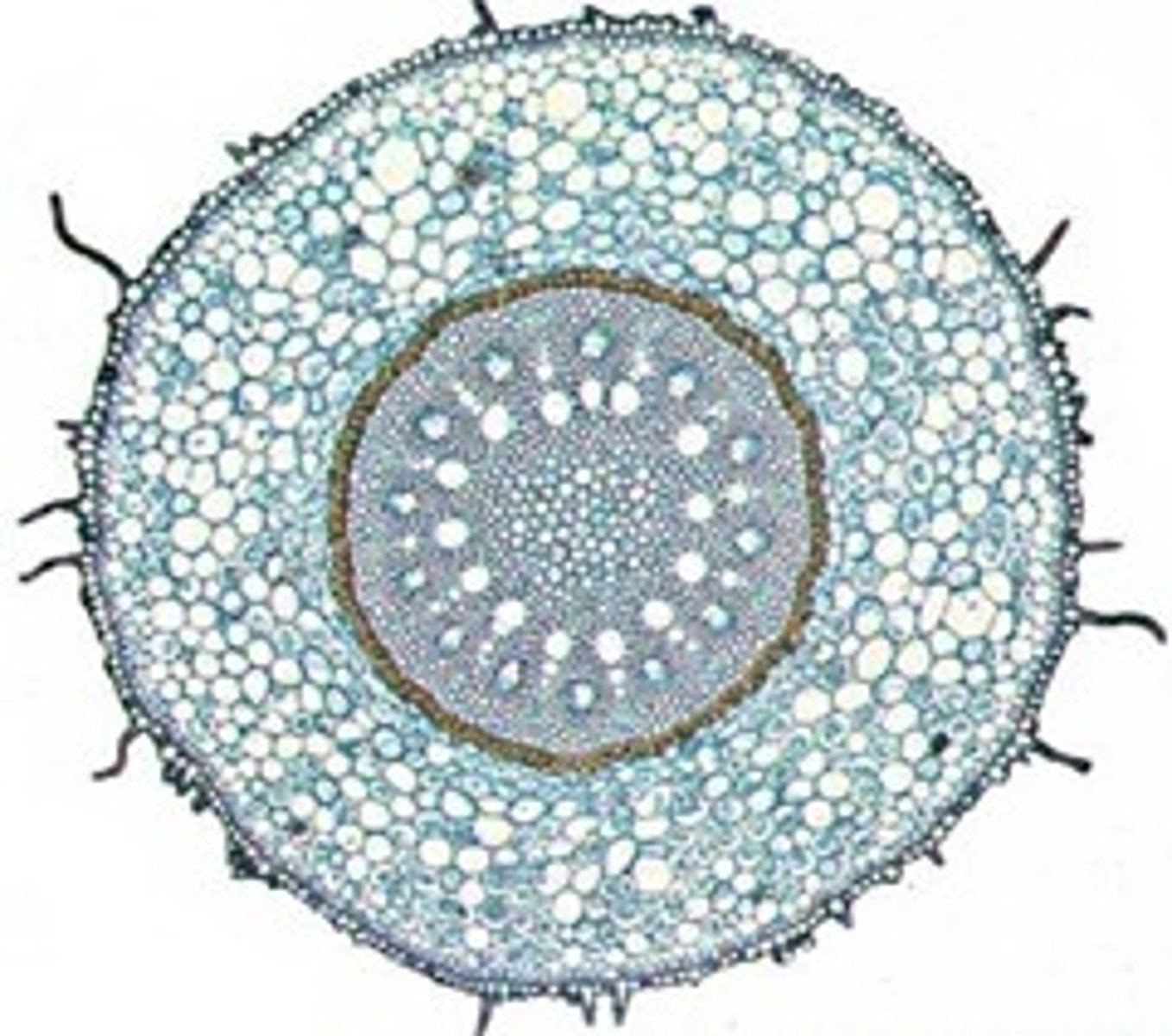
mucilage sheath
coats root tips growing in the soil (#5 in pic)
- originates in peripheral cells of the rootcap
(polysaccharide)
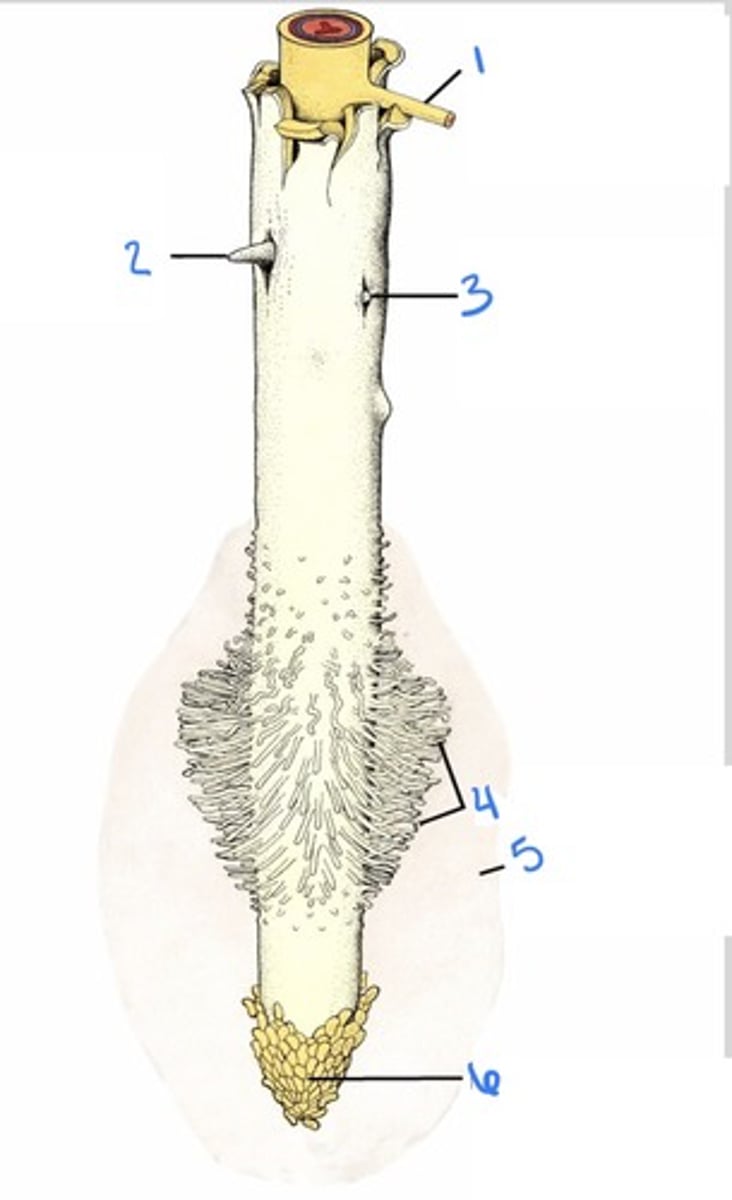
root cap
tough covering of the root tip that protects the meristem
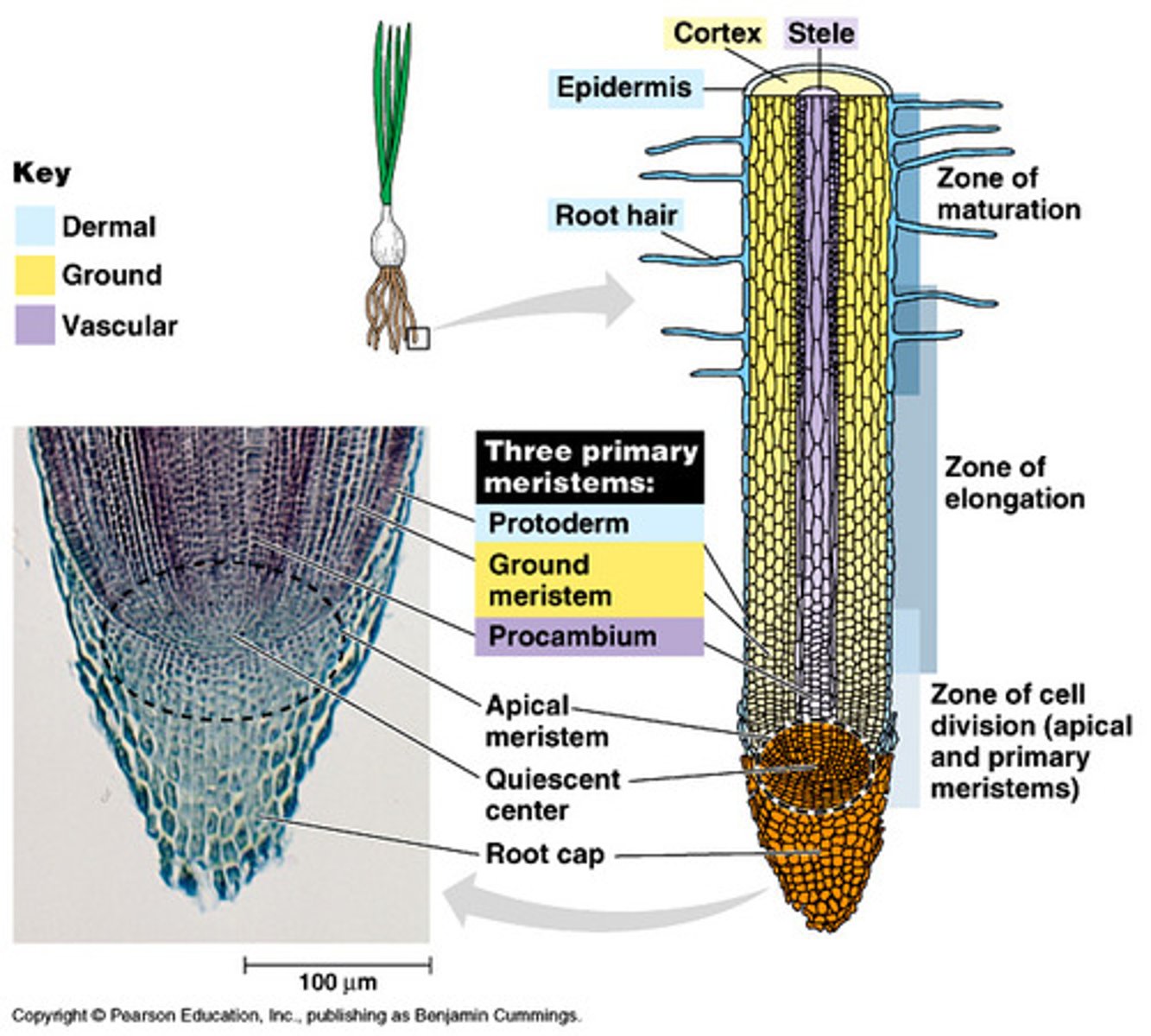
protoderm
The outermost primary meristem, which gives rise to the epidermis of roots and shoots
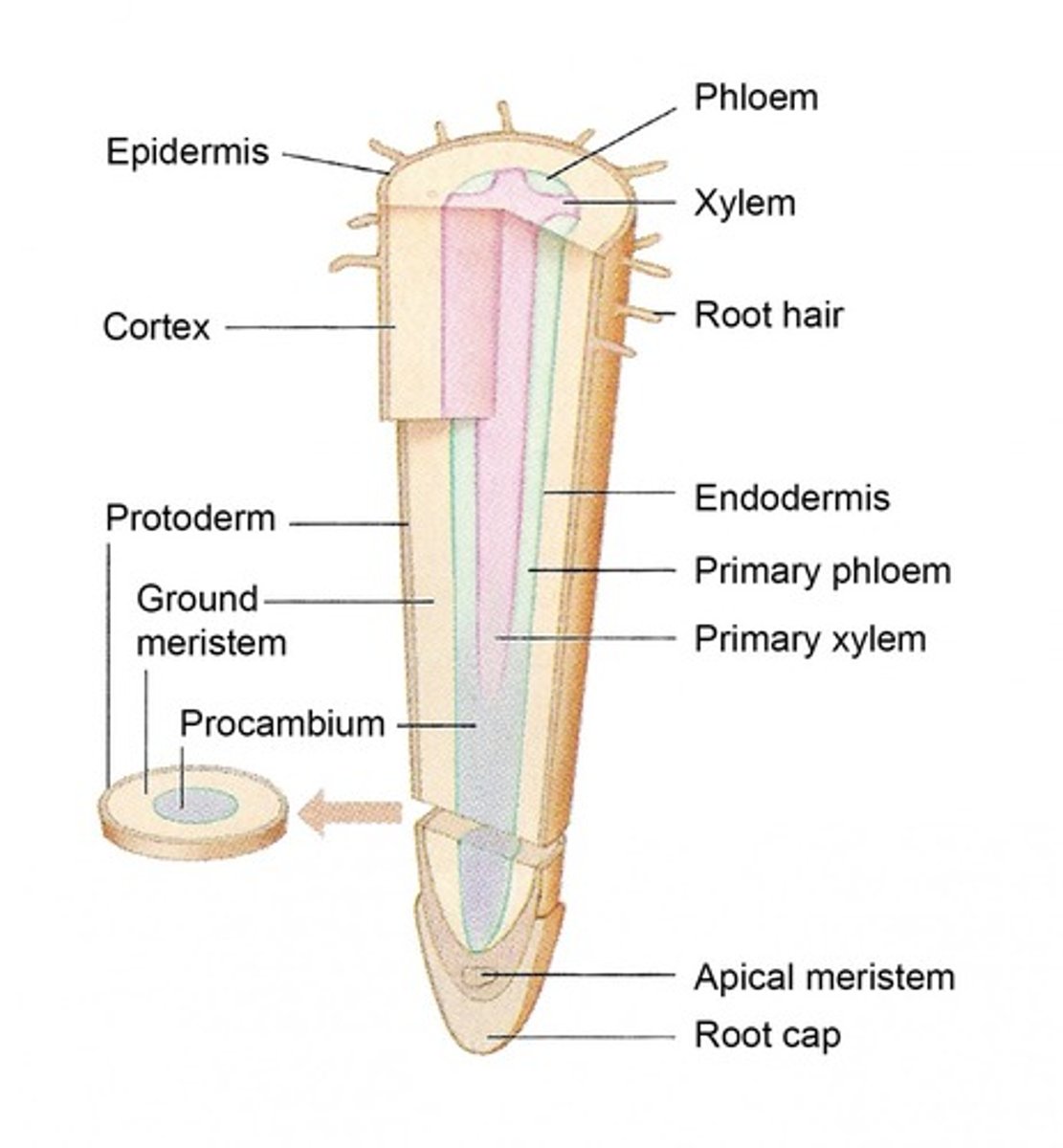
ground meristem
gives rise to the ground tissue system
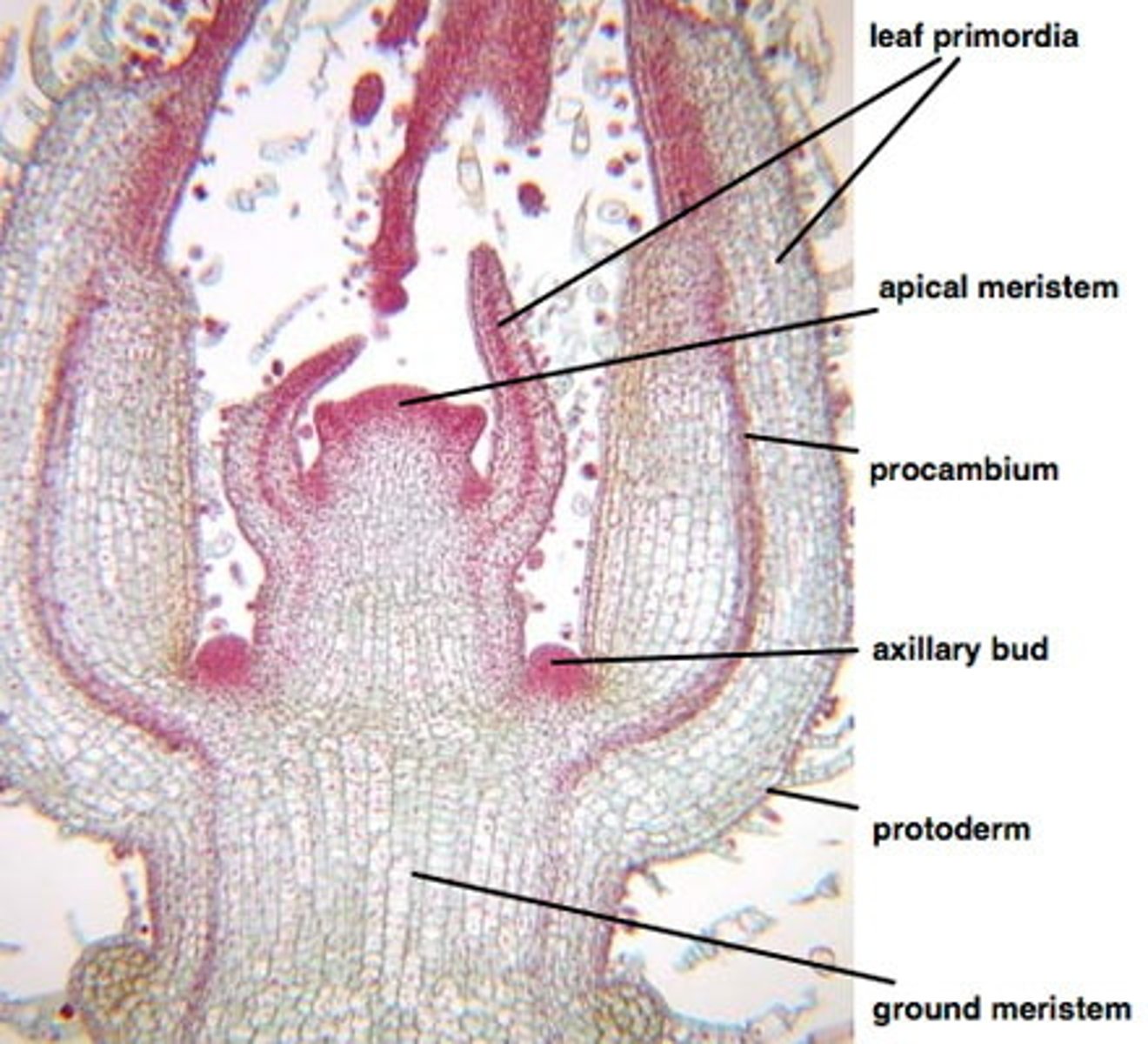
apical meristem
group of undifferentiated cells that divide to produce increased length of stems and roots
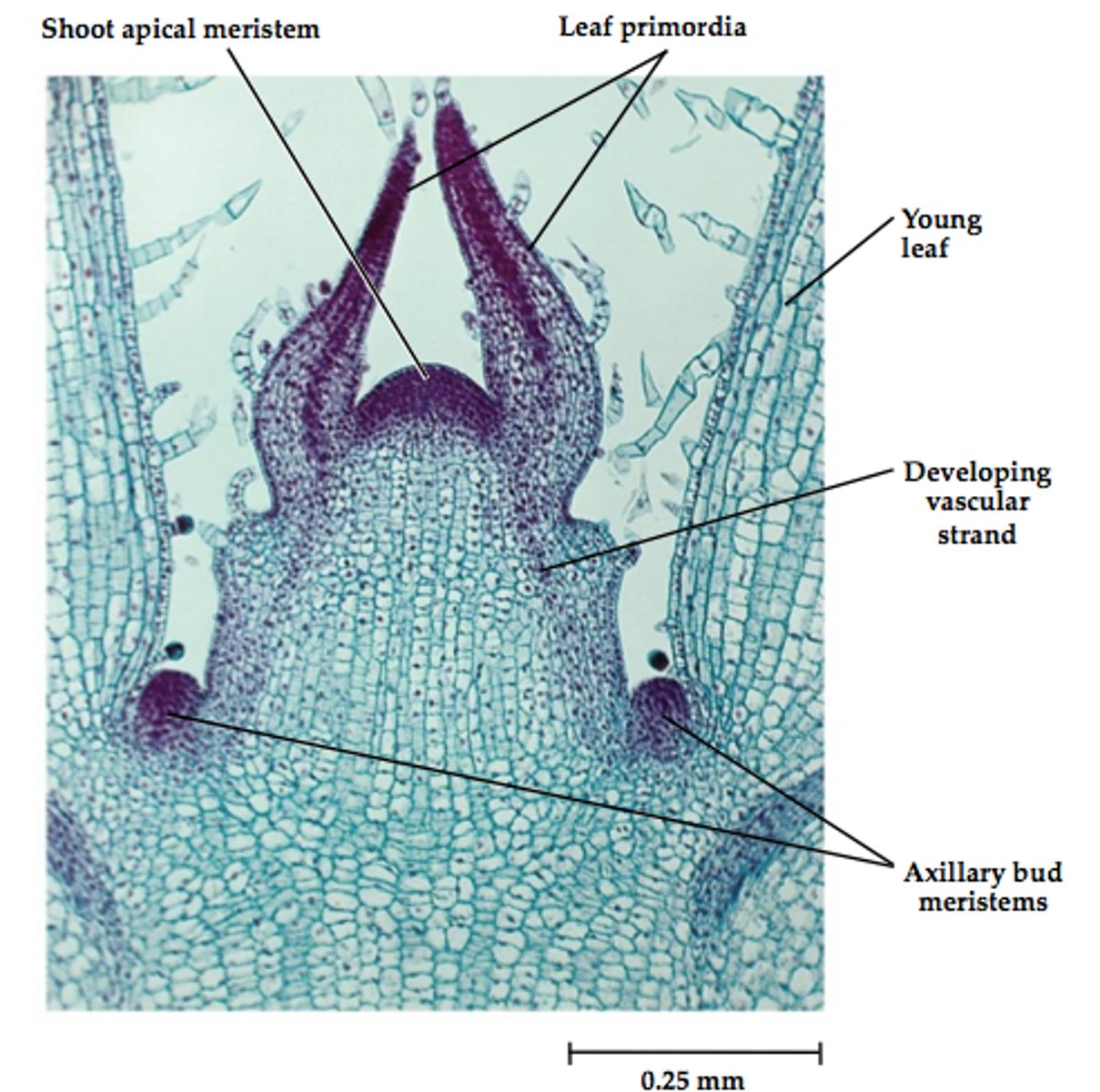
monocot root
pith inside vascular cylinder
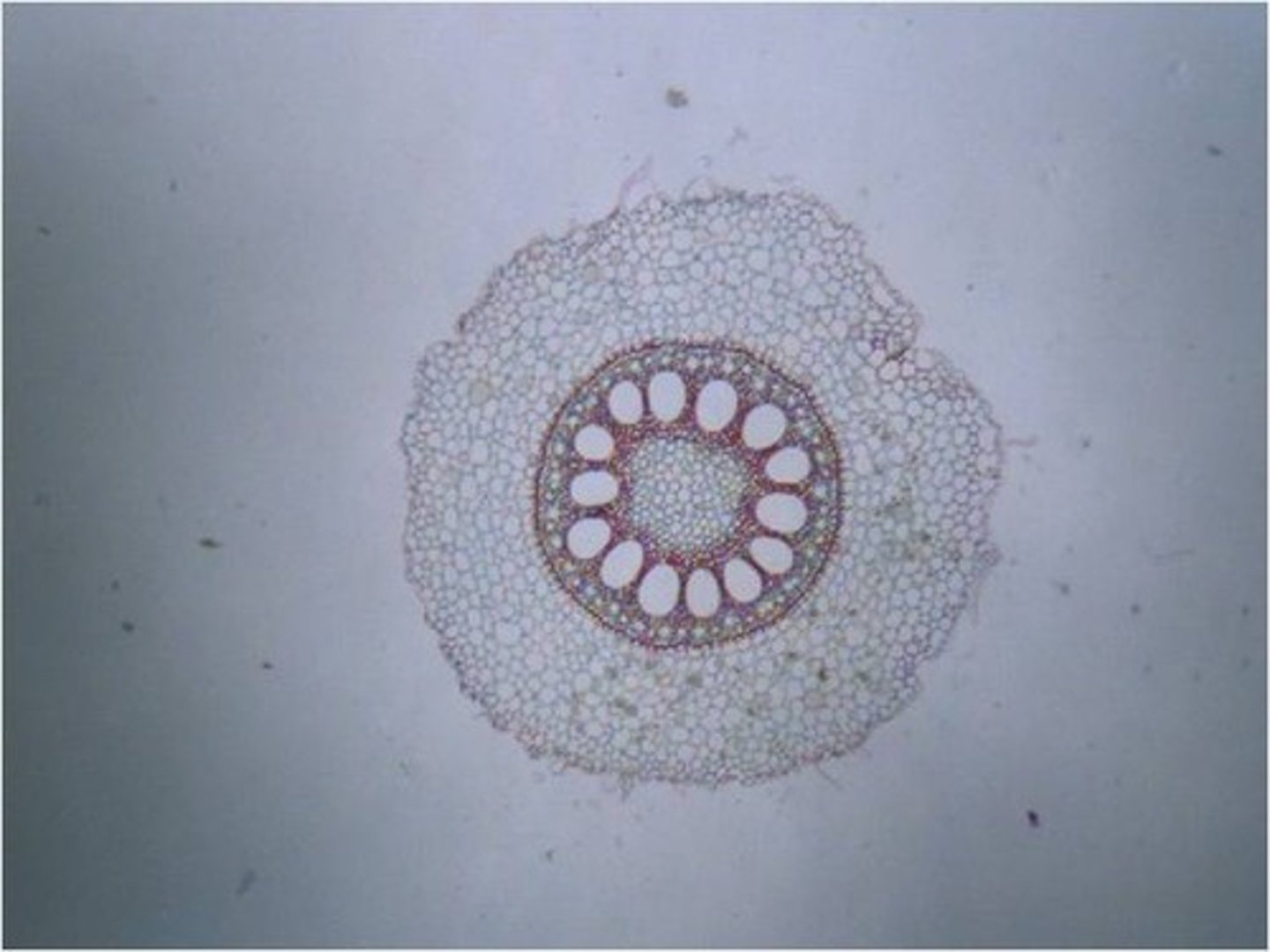
vascular cylinder
central region of a root that includes the vascular tissue-xylem and phloem
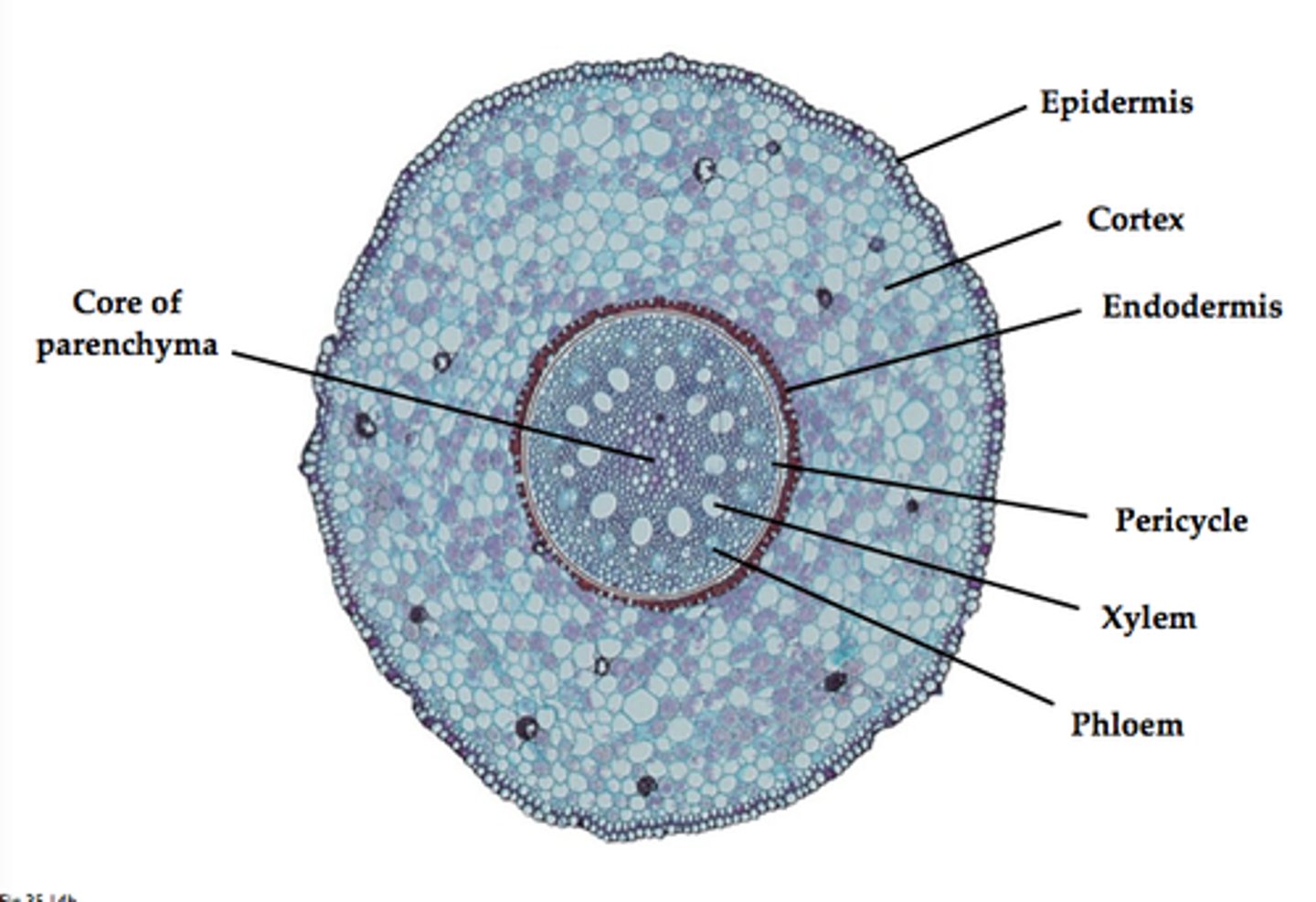
vascular cylinder with no pith
in eudicot roots
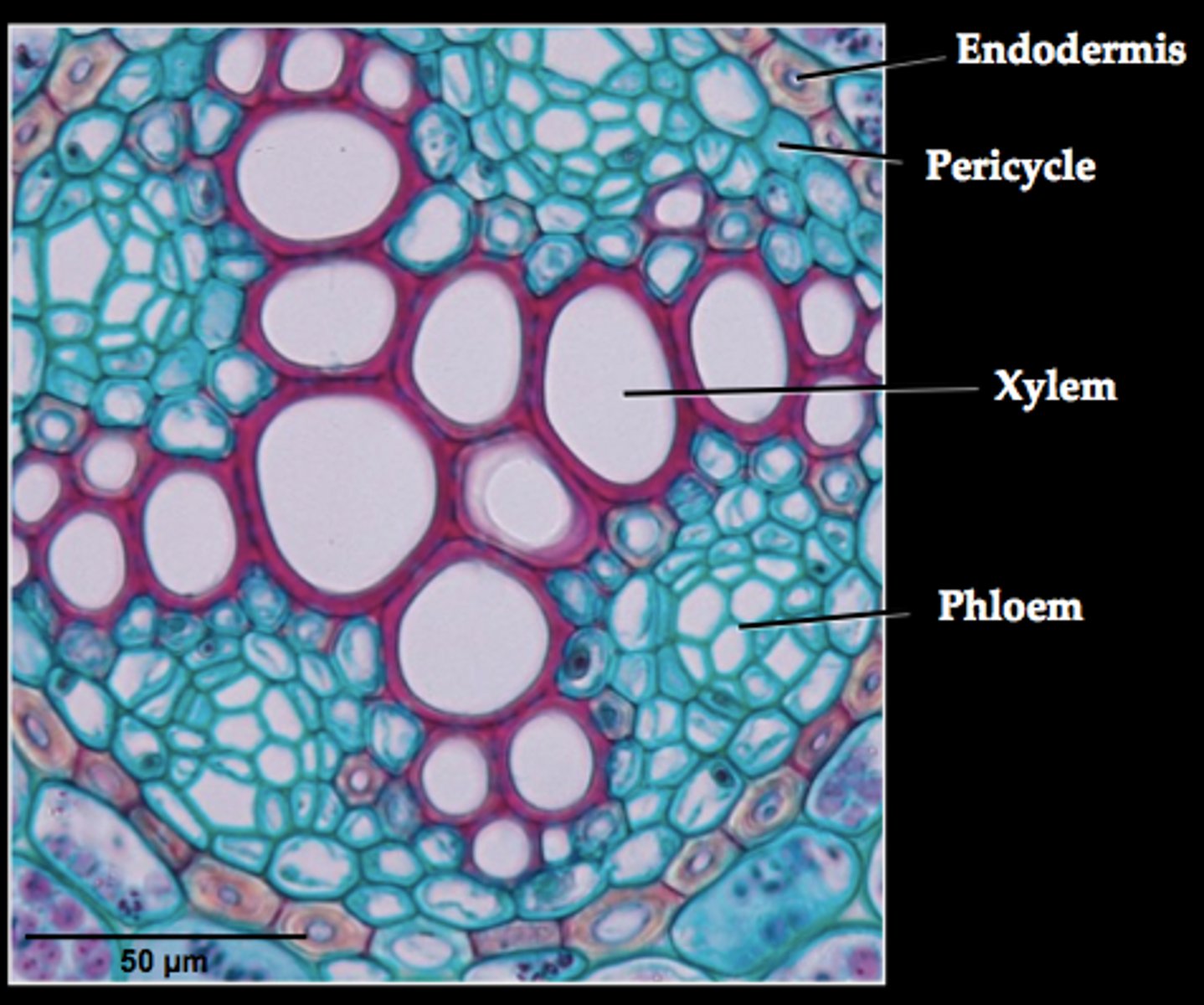
eudicot root
phloem between arms of xylem
- no pith inside vascular cylinder
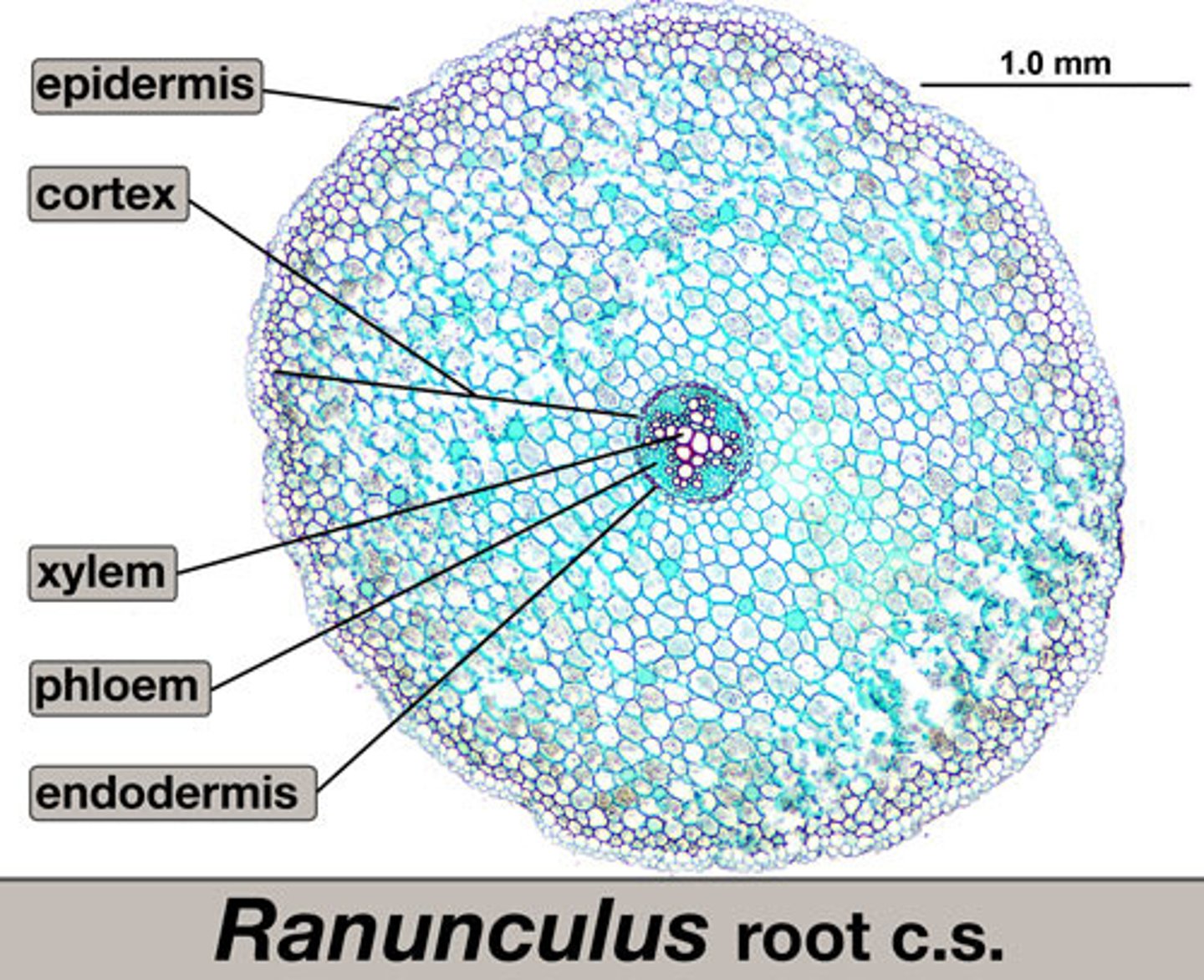
pericycle
a thin layer of plant tissue between the endodermis and the phloem
- outermost layer in the vascular cylinder, from which lateral roots arise.
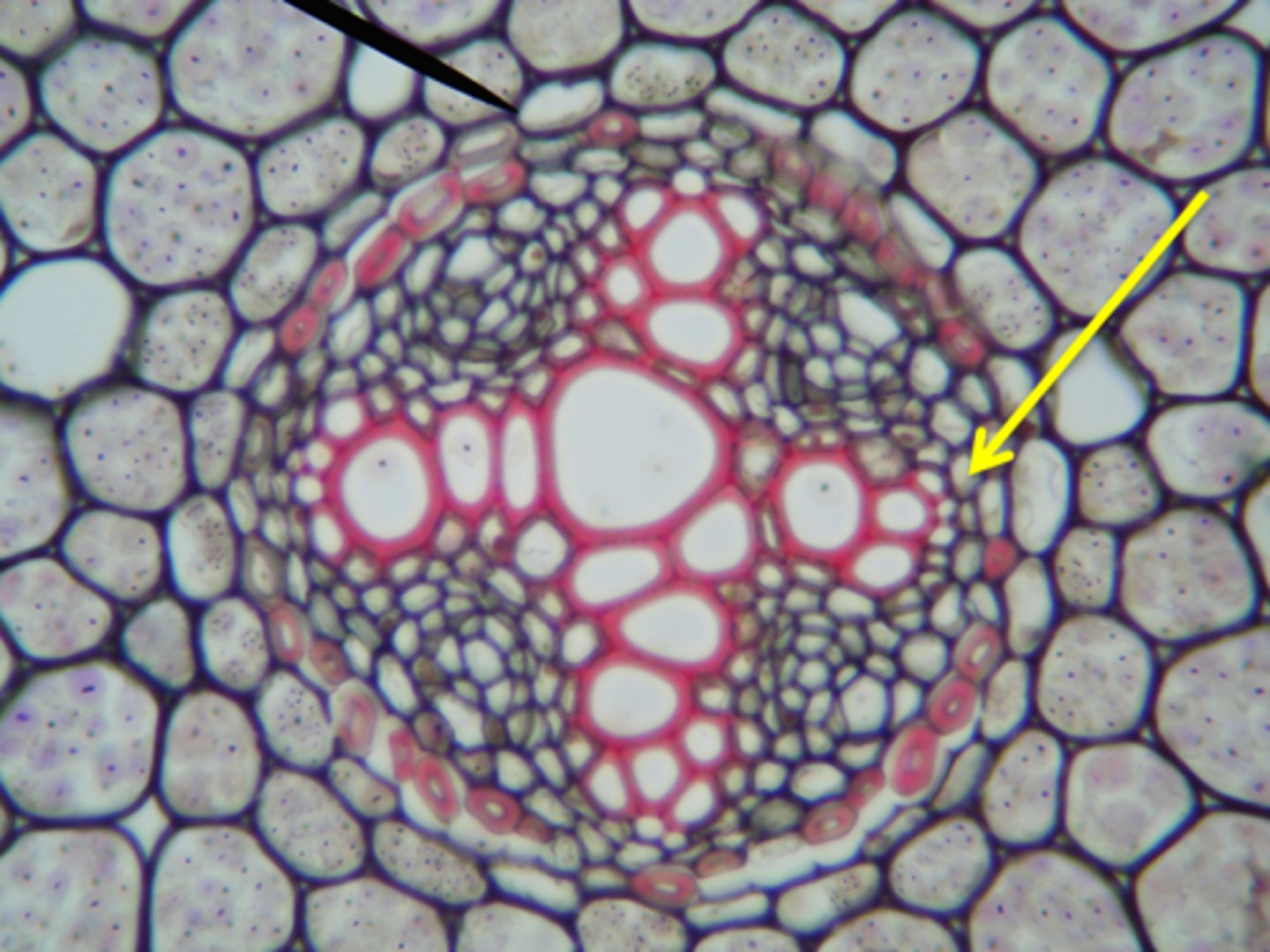
endodermis
The innermost layer of the cortex in plant roots; a cylinder one cell thick that forms the boundary between the cortex and the vascular cylinder.
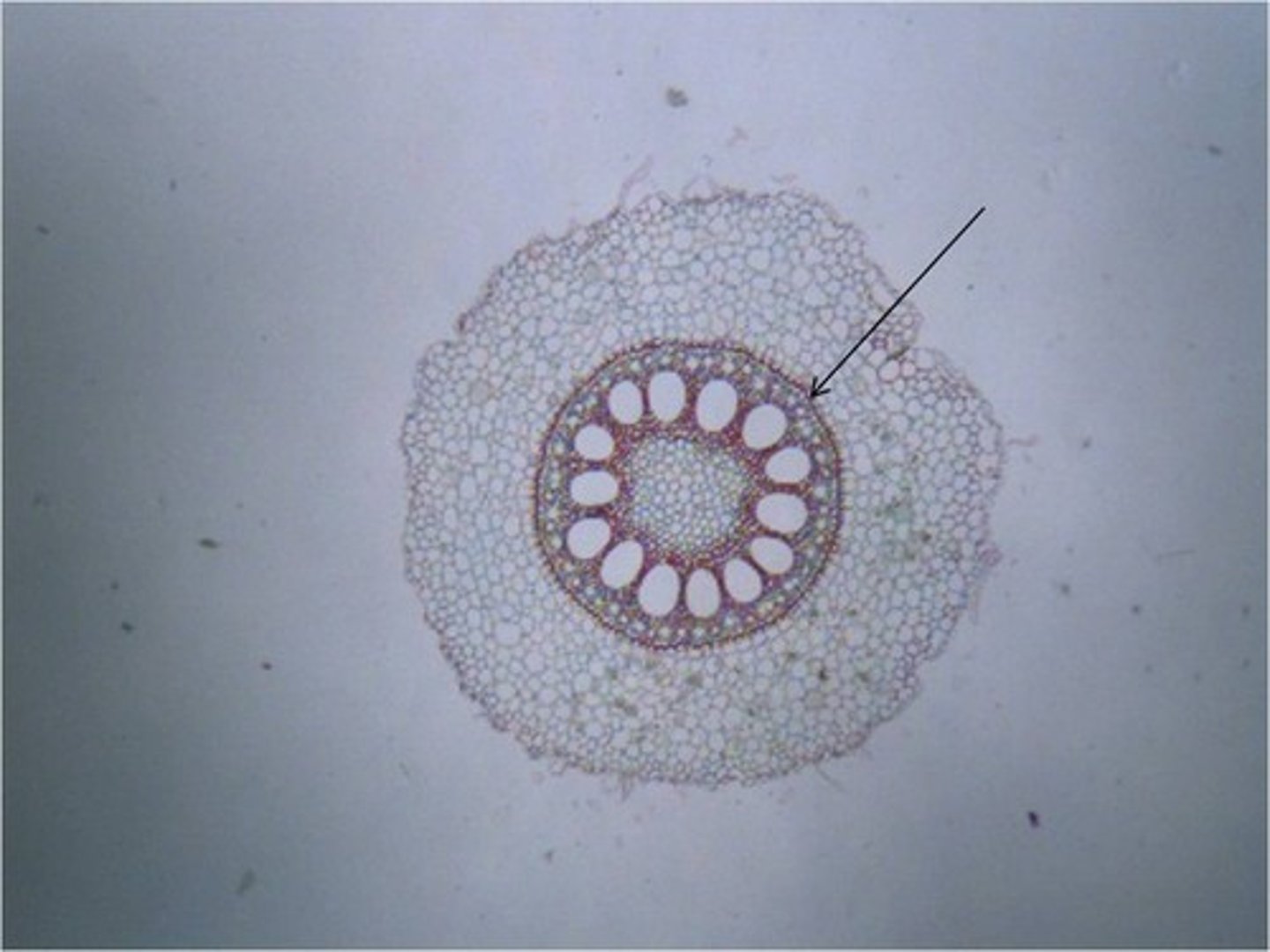
endodermis developments
1. casparian strip (suberin)
2. suberin lamella
3. layer of cellulose
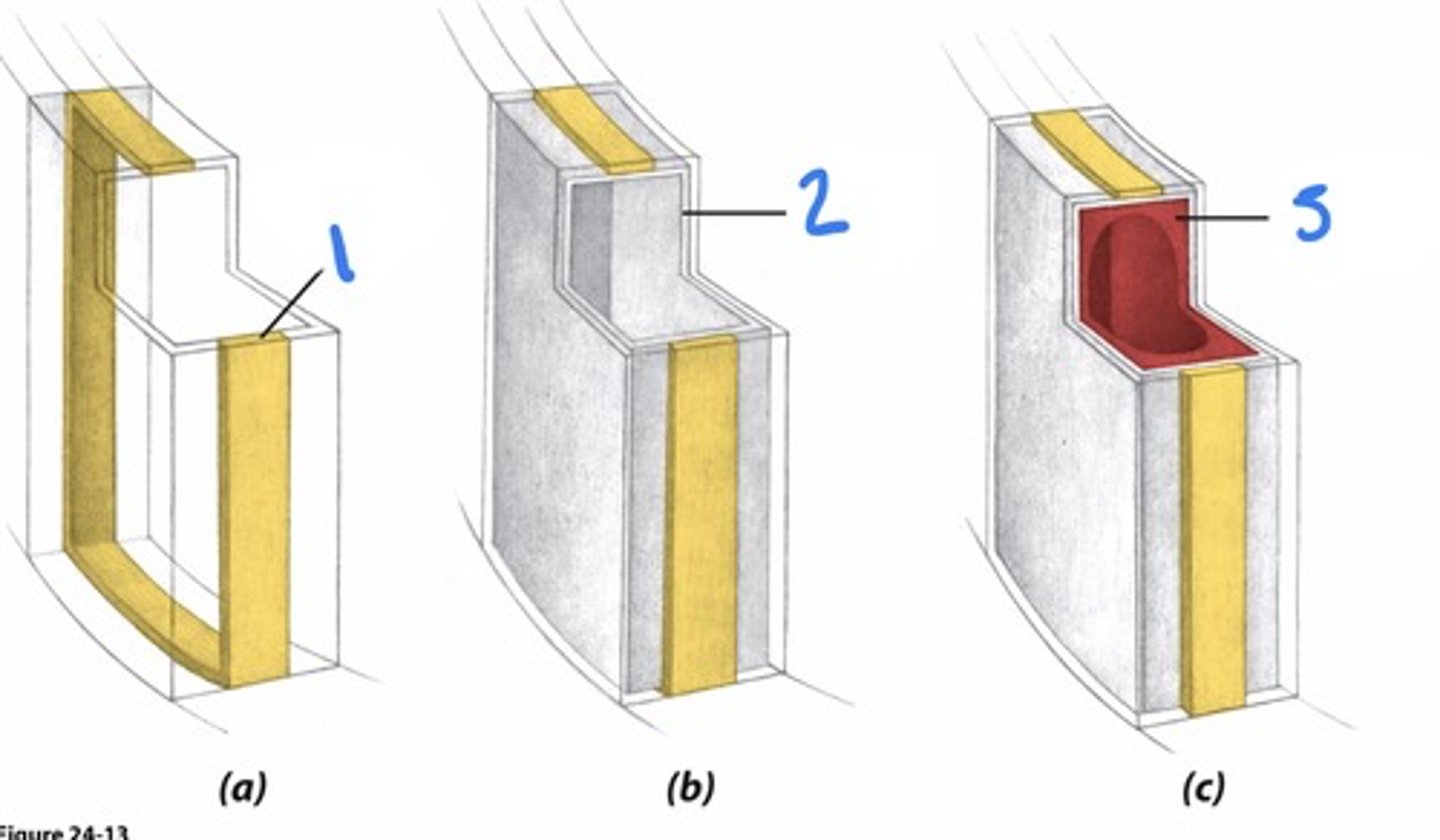
secondary growth internal anatomy
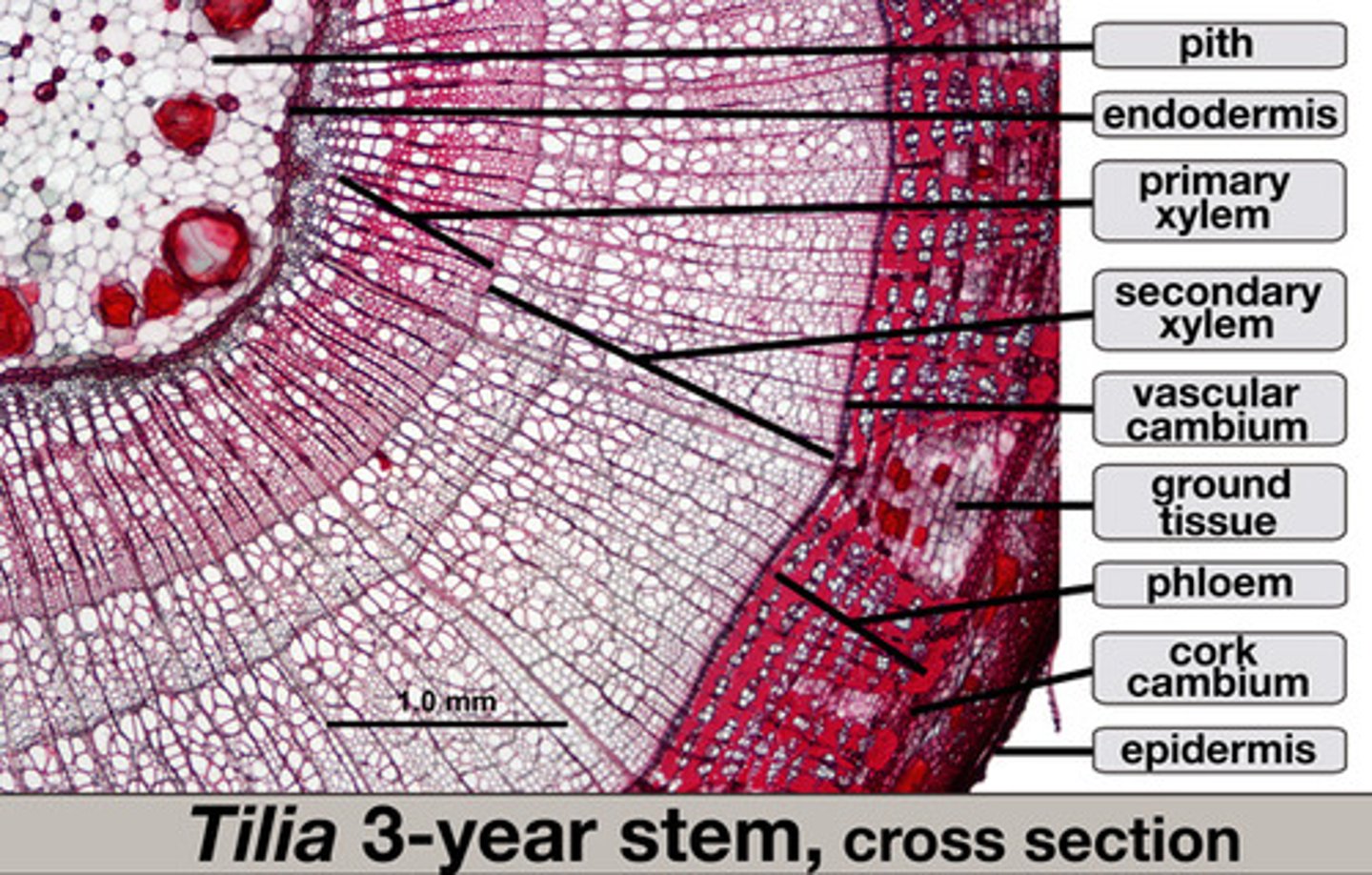
root modifications
sweet potato
aerial roots
root nodules
mycorrhiza
adventitious roots
- prop roots
- stilt
- pneumatophores
cypress knees
help keep the trees from falling over in the soft, wet soil of the swamp and helps them "breath" (O2)
- native to wetlands
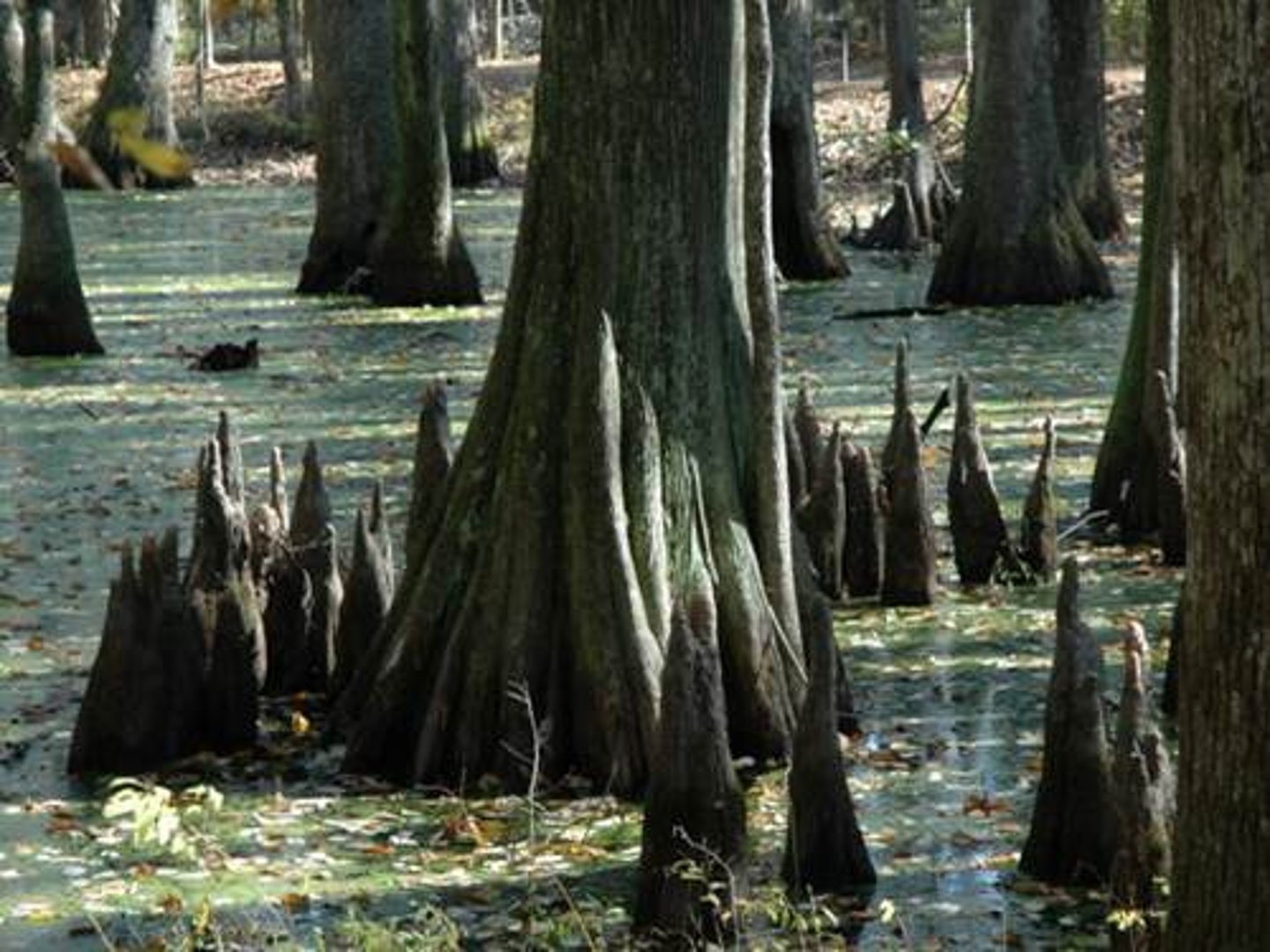
root nodules
Swellings of some plant roots that contain nitrogen-fixing bacteria
- most famous in legumes
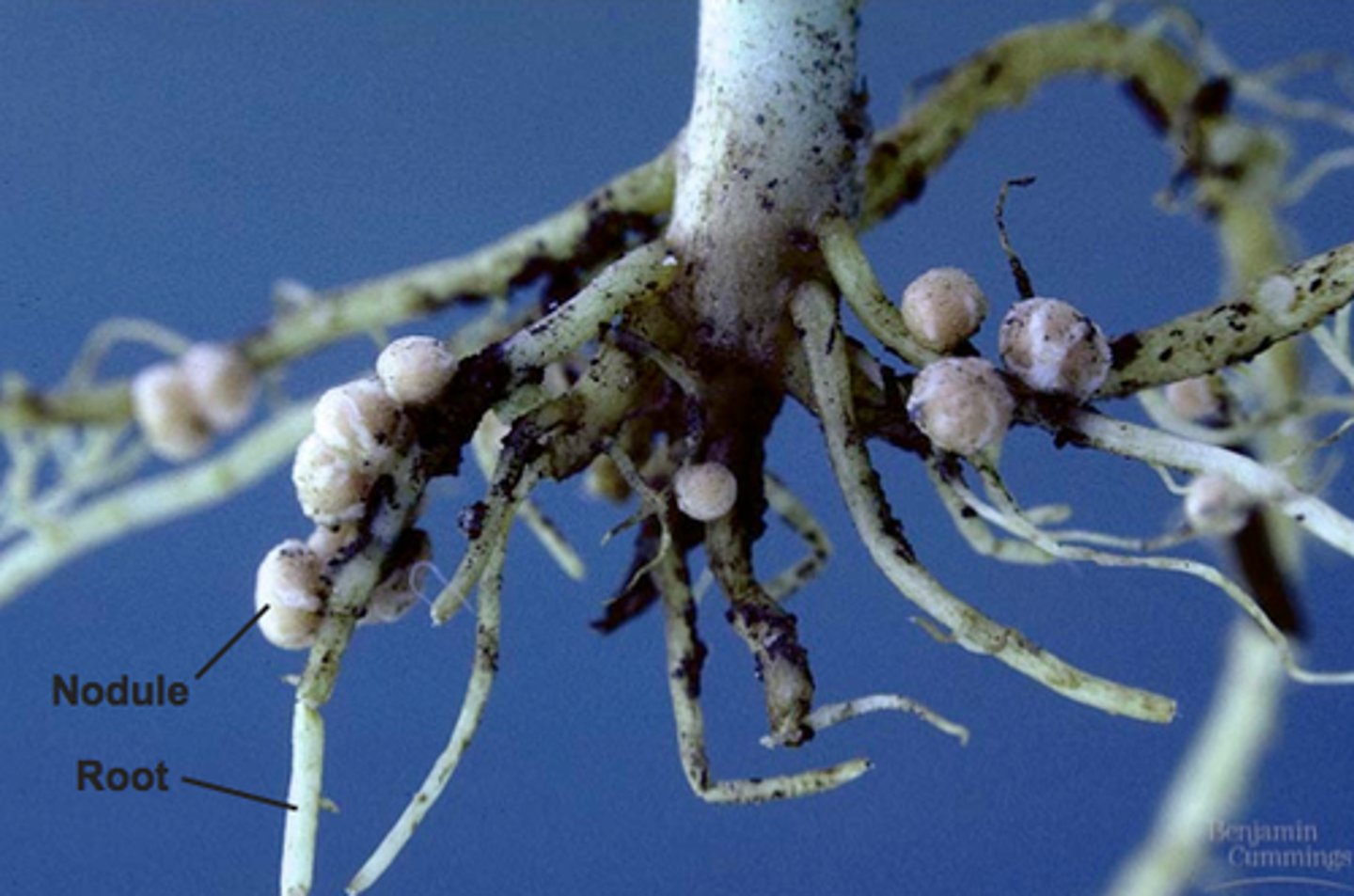
mycorrhizae
A mutualistic association of plant roots and fungus
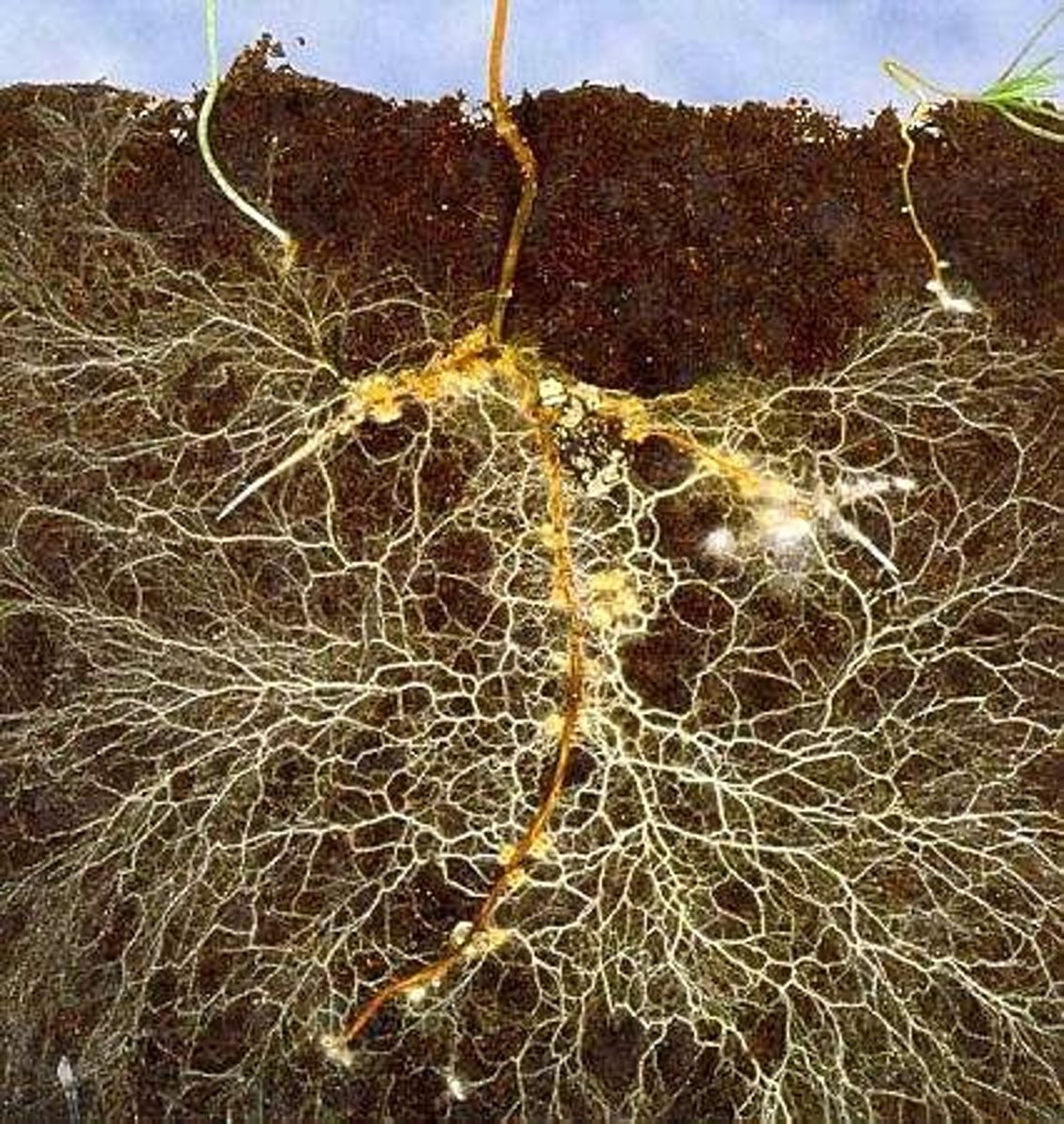
aerial roots
roots produced above ground and are photosynthetic
- ex: orchids
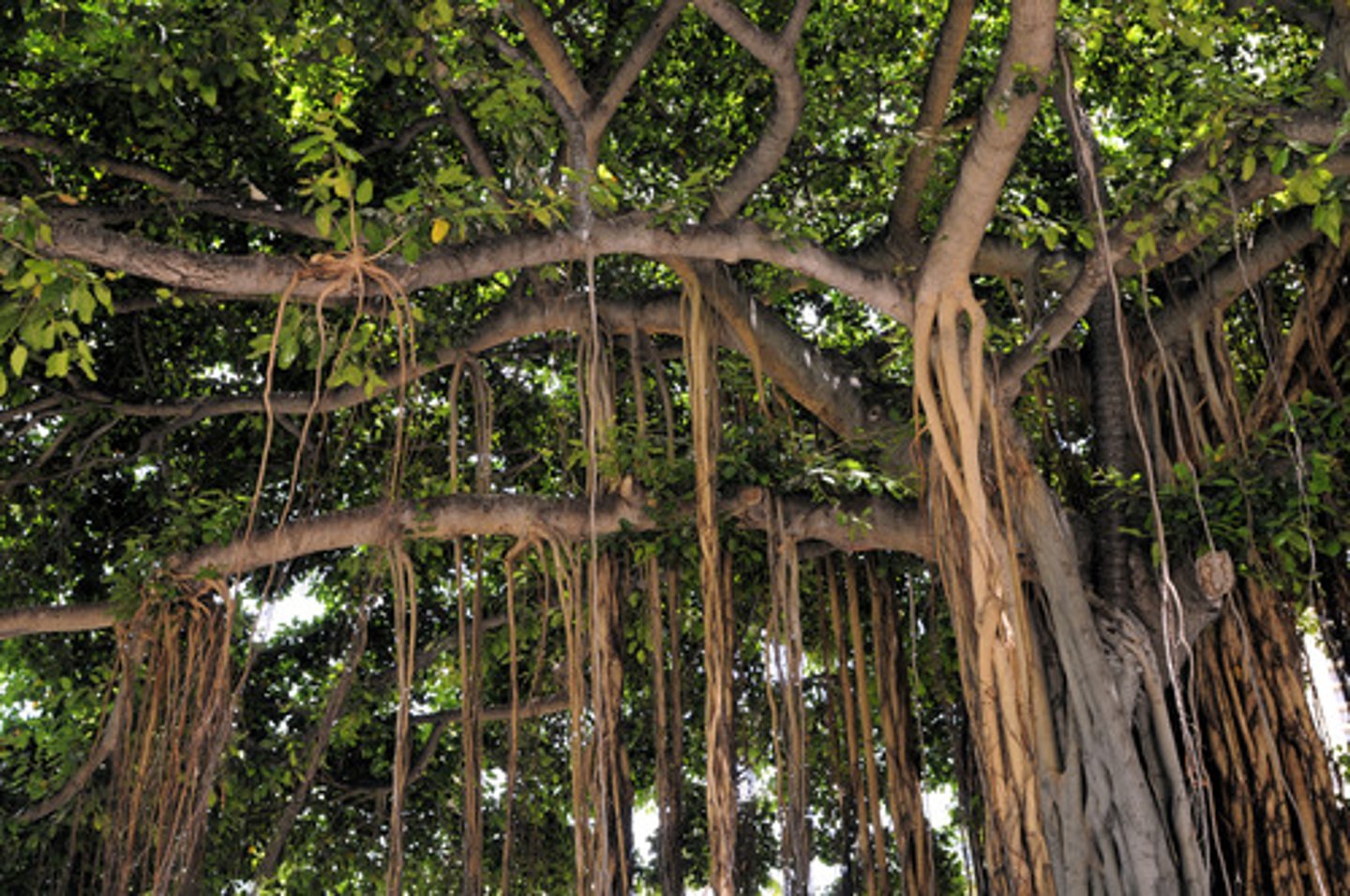
adventitious roots
roots that grow in unusual places, such as on the stem of the plant
- aerial roots
- prop roots
- stilt
prop roots
roots that grow partially in the air and partially in the ground; arise from node on stem
- stilt
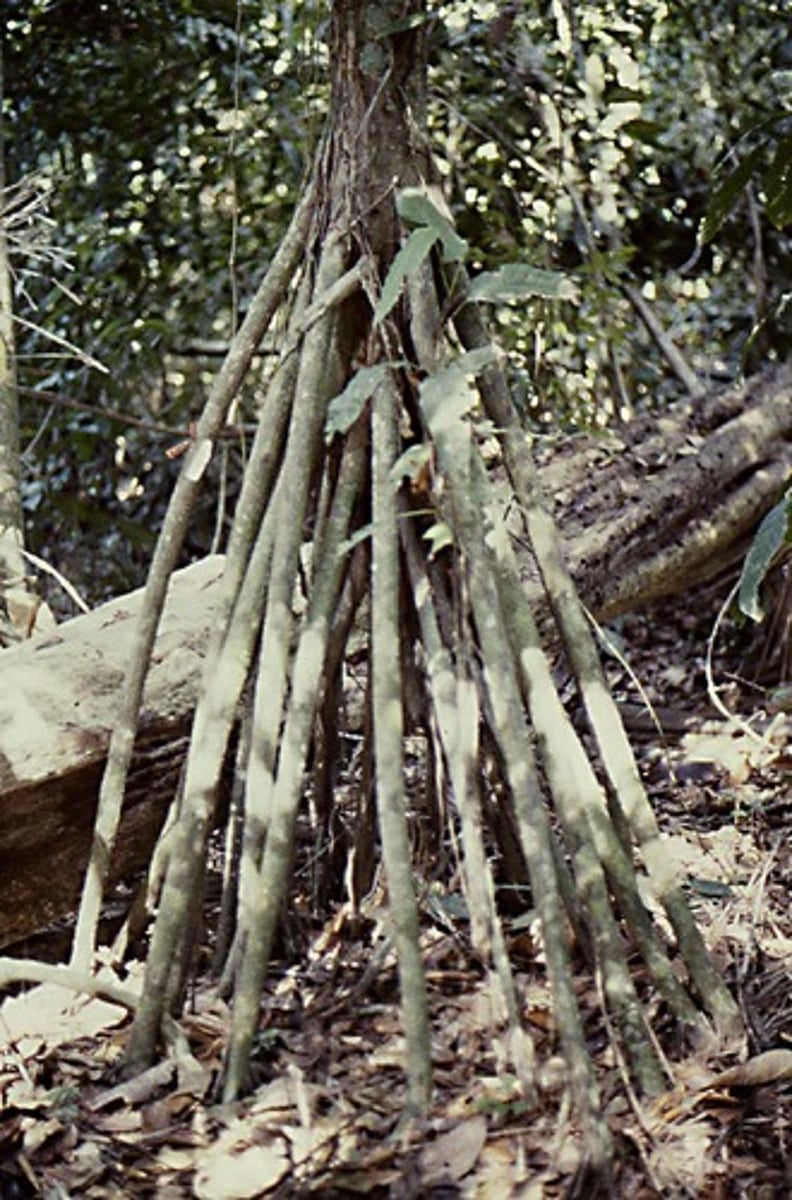
stilt roots
roots grown from branches
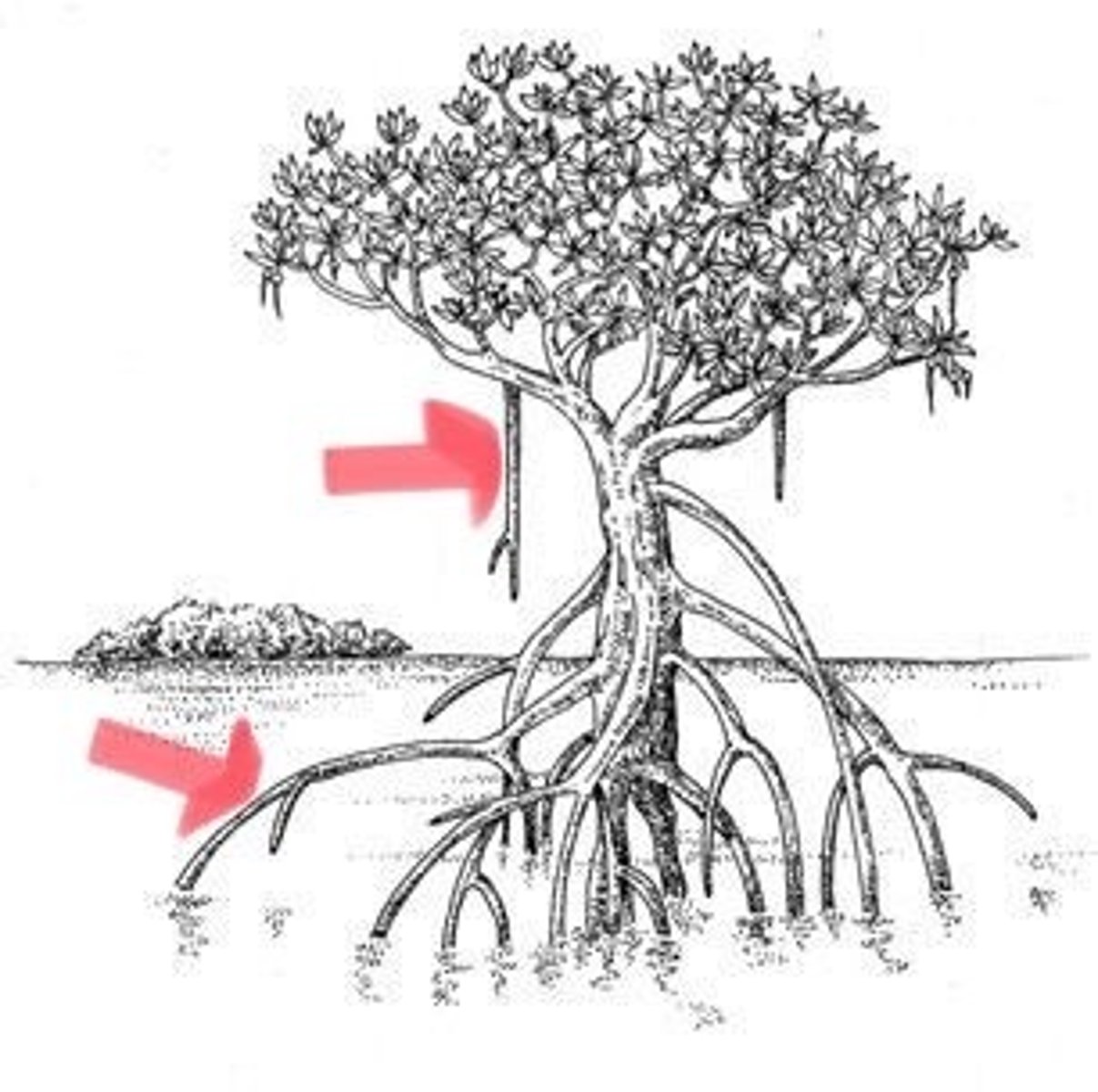
strangler fig
climbs and "chokes" tree
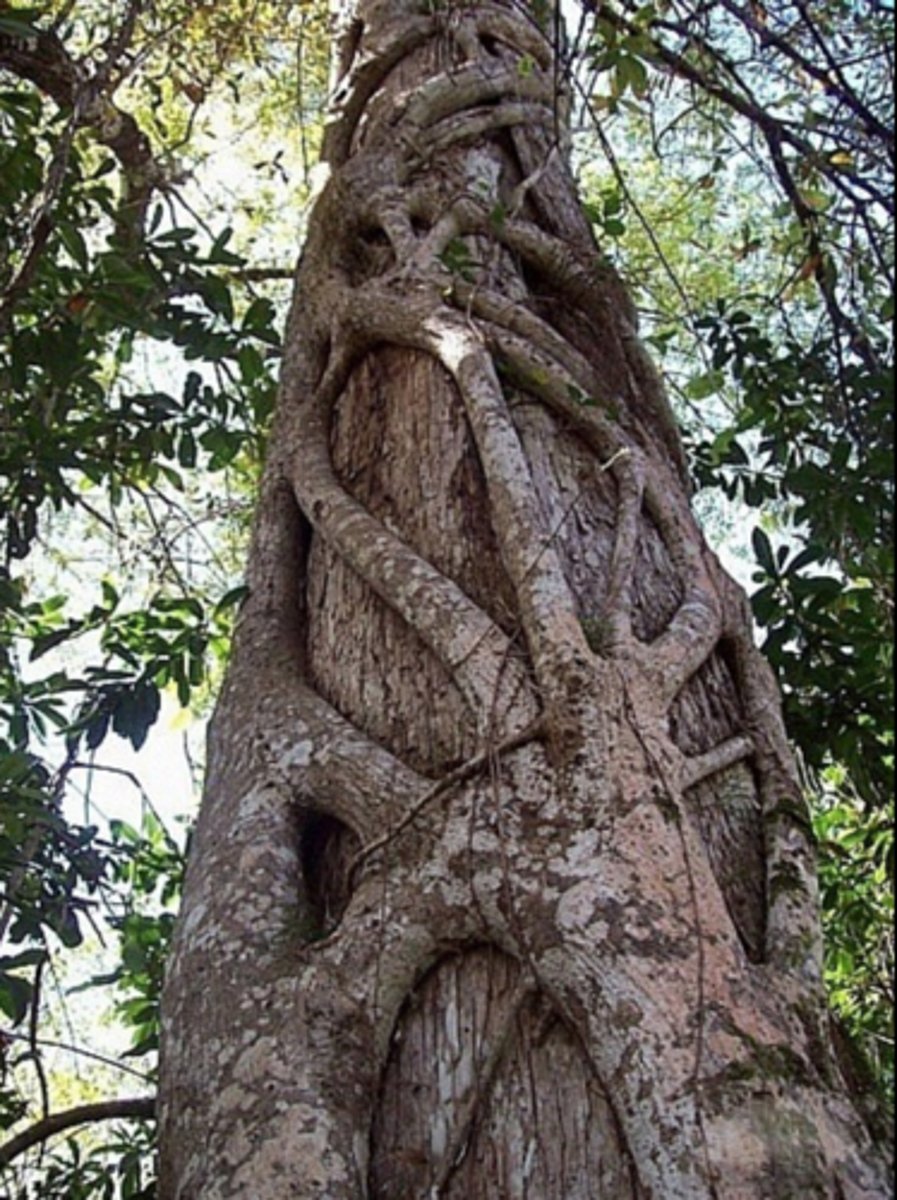
Rhizophora mangle
red mangrove
- stilt (prop) roots
- "land building" (traps sediment)
- self-fertilizing (large root grows from seedling)
- sensitive to the cold
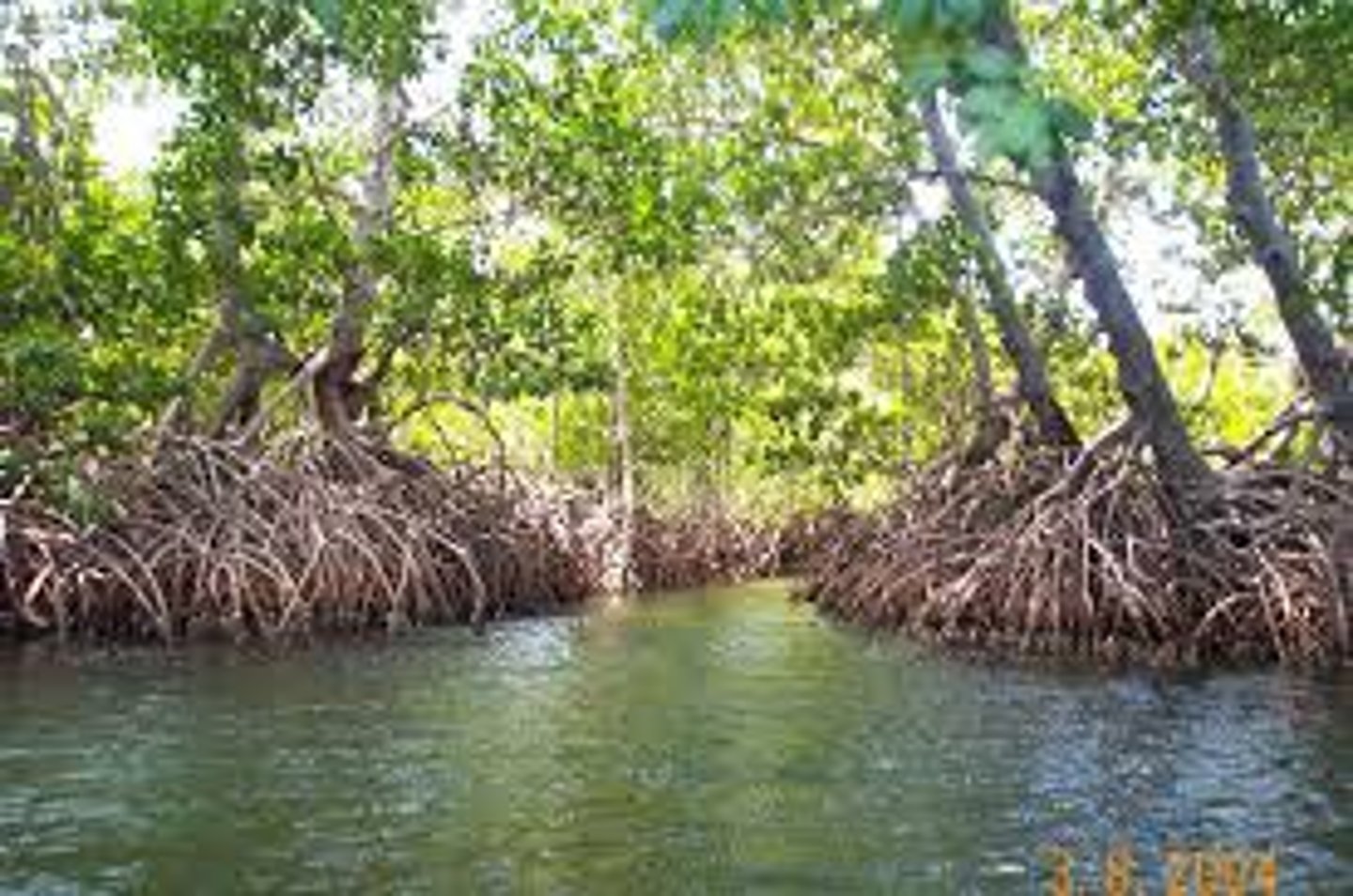
Avicennia germinans
black mangrove
- pneumatophores (photosynthesis and "land building")
- dark trunk
- salty leaves, lighter underside
- more tolerant to cold weather
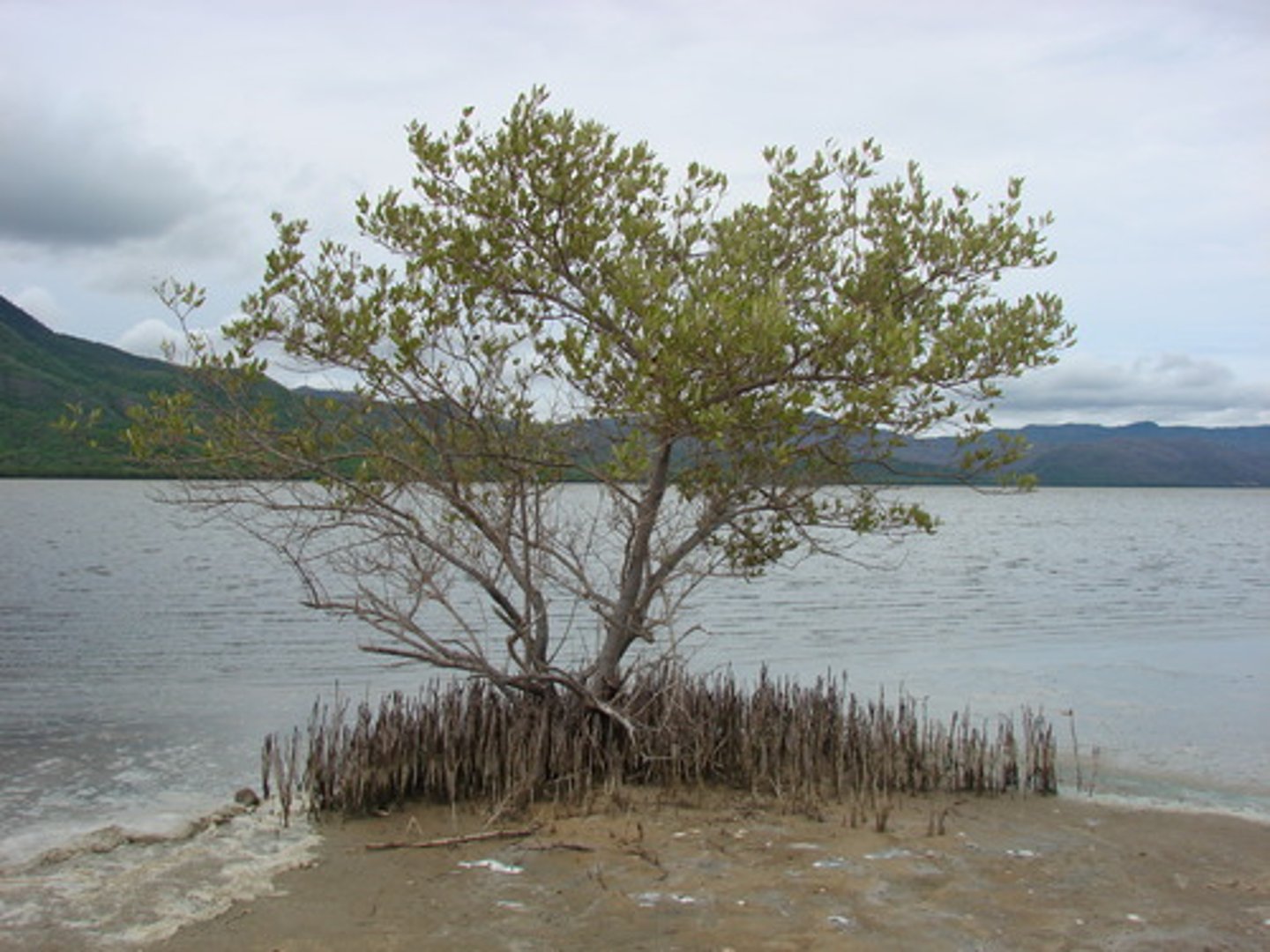
mangrove community
(in order of open water ----> dry land)
Red Mangrove (Rhizophora mangle) - stilt (prop) roots
Black Mangrove (Avicennia germinans) - pneumatophores ("dead man's fingers")
White Mangrove (Laguncularia racemasa) - glands on leaves
Buttonwood (Conocarpus erectus) -
mangrove food pyramid
Mangrove leaf Detritus --> Decomposers (bacteria and fungi) --> other detritus feeders (commercial & recreational species like fish and crab) --> higher trophic levels (commercial & recreational species like pelicans and blue heron)
benefits of mangroves
- trap sediments and nutrients (buffer for offshore reefs and intercoastal)
- protection against sedimentation and eutrophication of offshore reefs
- protection against storm damage